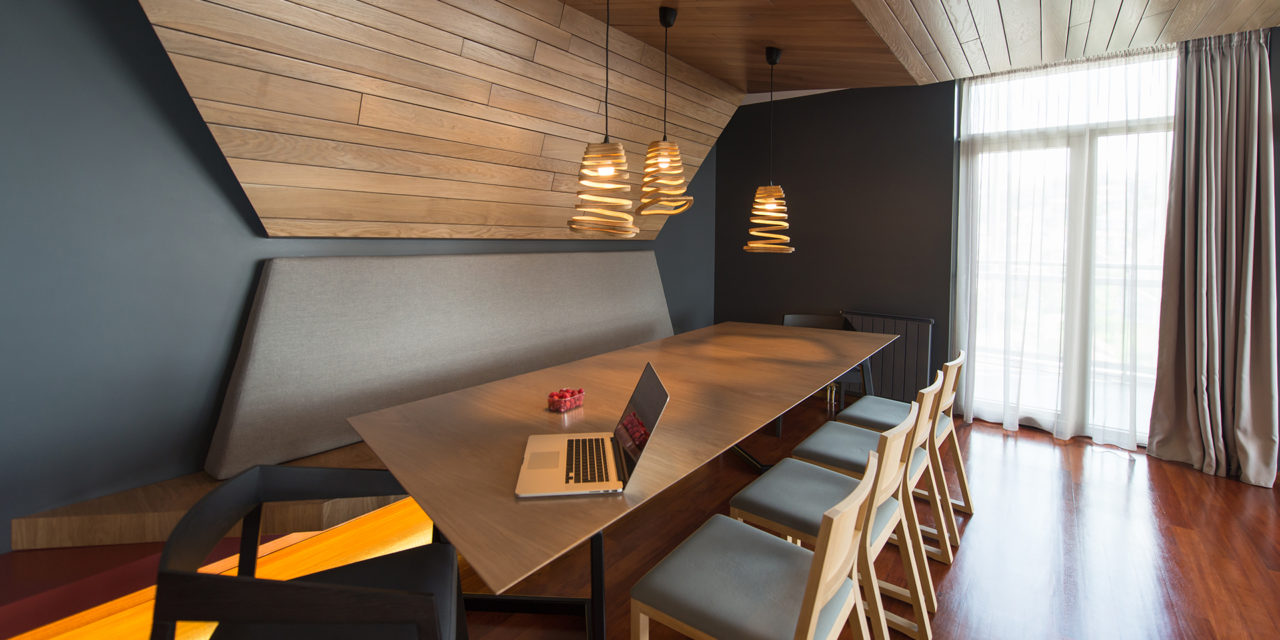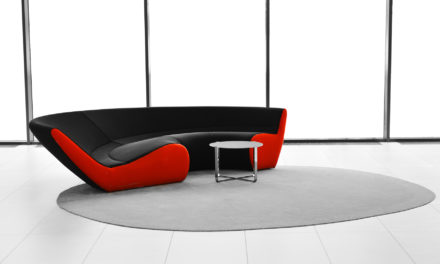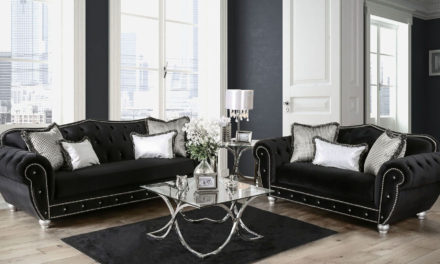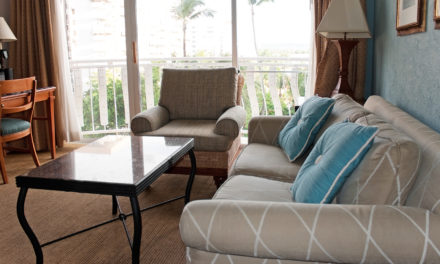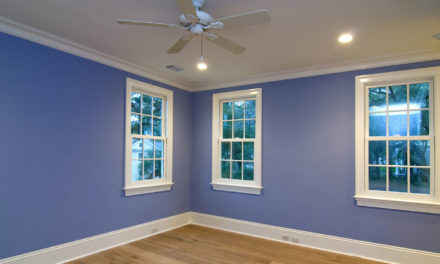The dining room is the heart of your home, where you serve up food and laughter with family and friends. Choose dining furniture that fits your needs and makes the room an even more comfortable place to spend time. This Pottery Barn guide will help you think about how to express your flair for interior design while you furnish your dining room with functionality and style.
MAKE SURE TO MEASURE

There are many factors to consider when choosing a dining table set, but the dimensions of the table are particularly important. The size determines the suitability and usability of the furniture within your space. When you’re shopping for tables, consider these important measurements:
- Rectangular and square tables: Each person at the table needs approximately 24″ of length and at least 12″ of width to spread out and eat comfortably, so a rectangular table measuring 4′ long and 3′ wide seats up to four people – two on each side. An additional 12″ of length at each end of the table seats up to six diners: two on each side, one at the head of the table and one at the foot of the table.
- Round tables: A pedestal base allows for additional legroom compared to a table with regular legs. While a 5′ round table with legs works well for up to four diners, the same table with a pedestal seats up to six people.
- Height: Most dining tables are 30″ high, and most chair seats are 17″–19″ high. For comfort and leg space, try to allow at least 12″ from the tabletop to the top of the chairs’ seats.
- Clearance: Diners should be able to move around the table, pull out chairs and sit comfortably. Allow at least 42″ between the table edge and the walls or the table edge and any furniture.
BALANCE SIZE AND SPACE

Getting the balance right between the size of your room furniture and the amount of available space enhances the appearance and functionality of the room. A small table in a large room might not become the focal point you desire, while a table that’s larger can make space feel cramped. When you scale the table to the size of the room, you maintain balance while also ensuring there’s plenty of space.
To get a better understanding of the table size you want, measure your dining room carefully. Consider the positioning of existing furniture – like buffets or shelves – as you’re planning where your new table will go, and check to see if it’s possible to open doors and move around unhindered with the table in place.
Additionally, think about how you’re getting the table into the room if you have narrow hallways and doors. It helps to draw a plan of the area to visualize the layout, and you can also mark the size of the table on the floor using masking tape. If it’s possible to walk around, open doors and access drawers and shelves without crossing into the marked area on the floor, your table dimensions will work well!
SIT COMFORTABLY

Having enough elbow room while chatting and eating is important, so you will want to create enough space for diners to sit without being cramped. Your choice of dining chairs makes it possible to maximize the use of your available space, too. For example, if you need a big table but space is limited, using a bench instead of chairs frees up the room; you simply push it fully under the table when not in use. Transparent acrylic chairs also work well in small rooms because they make the environment feel spacious and let plenty of light pass through.
When it’s time to get the family together, it’s usually “the more, the merrier.” If you find you only need a big table for such gatherings once or twice a year, an extendable dining table is a smart solution. A removable leaf, or a folding element, means that the table is compact when needed. However, when there’s a celebration with lots of visitors, you can extend the table to its full length and bring in some occasional chairs from the living room.
CHOOSE A SHAPE

The shape of a dining table helps to define its look and style, but it’s also a consideration relating to space. Choosing a table that matches the shape of your room enhances balance and harmony. Most dining rooms are rectangular, so a rectangular dining table is a traditional option. A round dining table is ideal for smaller rooms; there are no corners to bump against. If you choose a pedestal table, it’s usually possible to sit more people than other shaped tables of similar sizes.
Think about the primary use of your table. Round or square tables help to create a beautiful ambiance for candlelit meals or intimate gatherings where everyone is the same distance apart. If the table is larger, you may need a lazy Susan to help everyone reach serving platters. A long, rectangular table is an ideal solution when you want to host a large dinner party. Also, consider the many ways you use your table: Do you work at the table and need room for your laptop and files? If your kids gather to do homework, space is a necessity. Although you may only need seating for four at mealtimes, the table is likely used in many other ways that require additional space. The most common table shapes include:
- Rectangular: Fits well in long, narrow spaces, but is also good for dividing open-plan spaces to define areas for different uses.
- Square: A fashionable choice for smaller rooms, especially square rooms, where it enhances an intimate setting.
- Round: Cozy, intimate and a good space-saving option.
- Oval: A more space-efficient alternative to a rectangular table, with a more traditional look.
KEEP MATERIAL IN MIND

When choosing the material of your dining furniture, consider your room and existing pieces. Selecting something that blends well with your existing dining room decor creates a harmonious setting for relaxed dining. Mixed pieces show off a vibrant, eclectic style.
There’s no right or wrong choice, and this is a chance to experiment with materials to define your space. A robust wooden table fills the room and provides a defining focal point, but if you opt for a glass-topped table, you can open up space. Common material choices include:
- Solid wood: A timeless option with a warm, welcoming aesthetic and a unique appearance because of the varied grain patterns. Wood complements a wide range of decor styles and is available in many colors and finishes. To maintain a wood table’s protective coating, clean it with a water-vinegar mixture and a soft cloth.
- Reclaimed wood: An eco-friendly wood that fits in with lots of styles. The wood’s marked and well-worn appearance provides character. Reclaimed wood’s textured surfaces are easy to clean with small brushes and soft cloths.
- Glass: A modern, elegant and unobtrusive style. Glass is ideal in small rooms or apartments where you want to keep the space feeling open, and it’s easy to keep this looking its best with a damp cloth and glass-cleaning spray.
- Stone: Granite and marble are luxurious options with a natural, timeless quality. They’re easy to clean, withstand heat and work for indoor and outdoor use. Stone is susceptible to scratches with extended use, and due to its weight, it works well for small tables.
- Laminate: Wood with a laminate coating is a cost-effective option that provides many of the styles and colors of traditional solid wood. Laminated furniture is relatively light and easy to clean.
- Metal: A durable option that works well with an industrial or contemporary style, metal is easy to keep clean with a damp cloth.
The practical ideas in this guide will help you make a decision, but it’s your home and your rules, so buy what’s right for you. Take some notes and measure the space, and remember that your dining table probably serves as more than just an eating space. Consider the full range of needs you’d like your table to meet while thinking about the options that work with your room’s size. When you discover a dining table that speaks to your personal style, gathering for meals, conversations and laughter are even more enjoyable.

